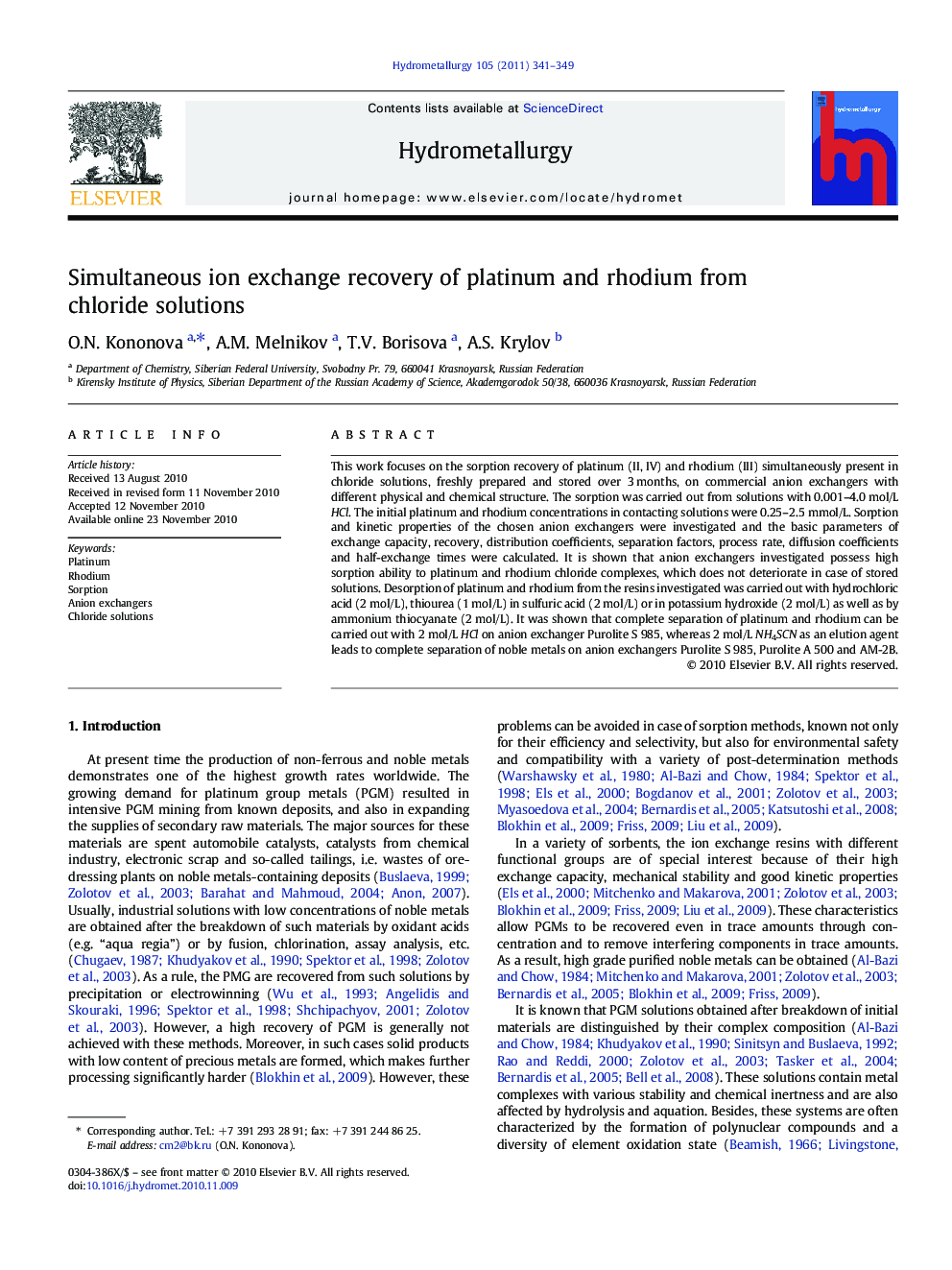| Article ID | Journal | Published Year | Pages | File Type |
|---|---|---|---|---|
| 212733 | Hydrometallurgy | 2011 | 9 Pages |
This work focuses on the sorption recovery of platinum (II, IV) and rhodium (III) simultaneously present in chloride solutions, freshly prepared and stored over 3 months, on commercial anion exchangers with different physical and chemical structure. The sorption was carried out from solutions with 0.001–4.0 mol/L HCl. The initial platinum and rhodium concentrations in contacting solutions were 0.25–2.5 mmol/L. Sorption and kinetic properties of the chosen anion exchangers were investigated and the basic parameters of exchange capacity, recovery, distribution coefficients, separation factors, process rate, diffusion coefficients and half-exchange times were calculated. It is shown that anion exchangers investigated possess high sorption ability to platinum and rhodium chloride complexes, which does not deteriorate in case of stored solutions. Desorption of platinum and rhodium from the resins investigated was carried out with hydrochloric acid (2 mol/L), thiourea (1 mol/L) in sulfuric acid (2 mol/L) or in potassium hydroxide (2 mol/L) as well as by ammonium thiocyanate (2 mol/L). It was shown that complete separation of platinum and rhodium can be carried out with 2 mol/L HCl on anion exchanger Purolite S 985, whereas 2 mol/L NH4SCN as an elution agent leads to complete separation of noble metals on anion exchangers Purolite S 985, Purolite A 500 and AM-2B.
Research Highlights► Simultaneous sorption recovery of Pt and Rh from chloride solutions was studied. ► Sorption mechanism is different for anion exchangers Purolite S 985 and A 500 and AM-2B. ► Complete Pt and Rh separation is achieved by desorption with 2 M HCl and NH4SCN.
